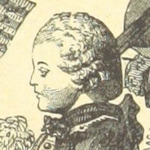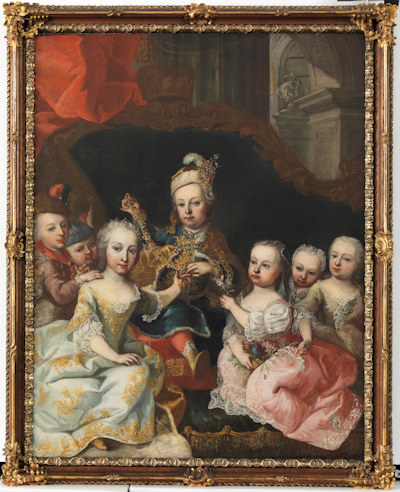
If you thought photo manipulation and fake news were modern phenomena, think again. European monarchs always understood the power of portraits and paintings to influence the viewer, manage public sentiment, and build a royal brand.
Which is why Mozart ended up as a celebrity guest at wedding celebrations he never attended…
- Book a concert experience* for your trip
- See also:
Painting as propaganda tool

(Schönbrunn Palace, Hall of Ceremonies © Schloß Schönbrunn Kultur- und Betriebsges.m.b.H. – Alexander Eugen Kolle)
It’s no surprise to learn that royal portraits could be about as accurate as today’s magazine cover photos.
Painters were obliged to be somewhat flexible in their representations, depending on the aims, schemes (and pride) of their customers. After all, the paintbrush can be mightier than the sword, particularly when it comes to arranging marriages across long distances.
For example, after meeting her fiancé (the future George IV of England) for the first time in 1795, Princess Caroline of Brunswick famously said:
He’s nothing like as handsome as his portrait
To be fair, George wasn’t too impressed either, needing a brandy to recover from the encounter. Needless to say, the marriage did not turn out to be the happiest in European history.
But selective truth in painting went beyond portraits.
In 1760, Empress Maria Theresa’s son and heir, the future Emperor Joseph II, married Isabella of Parma to consolidate a new alliance with the French (Isabella was a granddaughter of Louis XV of France).
Martin van Meytens, the leading court painter of the time, captured the marital celebrations in Vienna on canvas for posterity. You can see four of his huge creations in the Hall of Ceremonies at Schönbrunn on a palace tour.
The paintings include the famous procession of carriages that announced the arrival of European nobility for the grand occasion, the wedding service in the Augustiner Hofkirche, and the wedding feast and musical entertainment in the Hofburg Palace.

(Joseph II. as crown prince with six siblings, painted by Martin van Meytens around 1750; Wien Museum Inv.-Nr. 61011; excerpt reproduced under the terms of the CC BY 4.0 license; photo by Birgit and Peter Kainz, Wien Museum)
These artworks serve as important historical resources, depicting the clothes and buildings of the time in considerable detail.
Look closely and you’ll find a young boy pictured among the guests…none other than the child prodigy, Wolfgang Amadeus Mozart!
Or so (allegedly) the painter would have you believe.
Except it can’t be Mozart.
At the time of the wedding, which took place a couple of years before van Meytens completed the paintings, the young Mozart was still a relatively unknown four-year-old boy living in Salzburg.
By the time the paintings neared completion, Mozart had achieved considerable fame in Vienna and at court. So much so that historians suspect it was deemed necessary to include him in the audience.
(Mozart himself has been doomed to suffer the ignominy of fake portraits. I seem to recall the Mozarthaus has a section of their exhibition dedicated to various inaccurate images of the composer.)
The false Mozart wasn’t the only example where van Meytens was, shall we say, “economical with the truth”.
That giant procession of wedding guest carriages pictured on one canvas certainly took place, but not in an open square as depicted in the painting. Artistic licence essentially removed the buildings that lined the long procession so viewers could better appreciate the splendour of the event.
Plus ça change, as Isabella of Parma might have said in her court French.